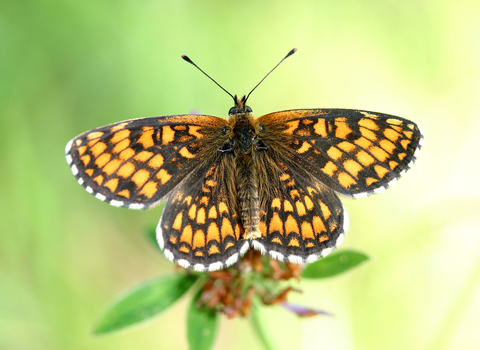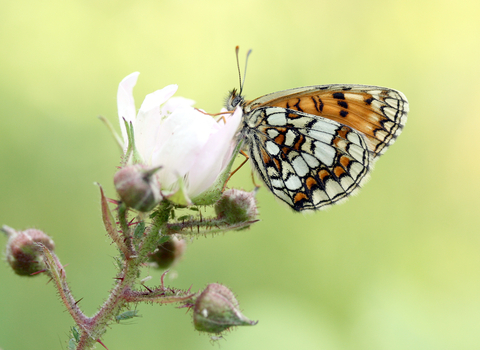
©Jim Higham

©Jim Higham
Heath fritillary
The rare heath fritillary was on the brink of extinction in the 1970s, but conservation action turned its fortunes around. It is still confined to a small number of sites in the south of England, however.
Enw gwyddonol
Melitaea athaliaPryd i'w gweld
May to JulyGwybodaeth am rywogaethau
Ystadegau
Wingspan: 3.9-4.7cmProtected in the UK under the Wildlife and Countryside Act, 1981. Priority Species under the UK Post-2010 Biodiversity Framework.
